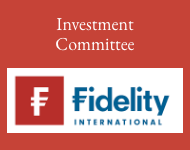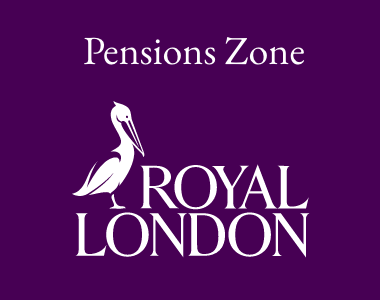Laith Khalaf, head of investment analysis at AJ Bell, considers the continued popularity of passive funds and provides 6 tips for building a passive portfolio
Personal investing has been transformed over the last twenty years, and the proliferation of passive funds has been one of the key contributing factors. Characterised by their low fees and simplicity, passive funds provide investors with an effective way to gain diversified exposure to various asset classes and market themes, and are used by novice and experienced investors alike.
The popularity of passive funds seems to keep growing too. Ten years ago passive funds made up just 9% of the UK retail fund total; today that stands at 22%. So far in 2023, passive funds have accounted for 128% of total net retail fund flows, with active funds registering a -28% contribution to the total with a £2 billion outflow (based on Investment Association data).
We can see the hegemony of passive funds reflected in the funds chosen by AJ Bell’s DIY investors so far this year too. Nine of the ten most popular funds were passive, with Fundsmith Equity being the only hold out against the tracker tide.
There are hundreds of tracker funds available to UK investors, some of them niche, but many offering plain exposure to global markets. Plain vanilla trackers make investing as simple as it can be, but investors still need to do a bit of legwork to build a passive portfolio. Below is a summary of the key questions passive investors need to address.
Most popular funds with AJ Bell’s DIY investors Jan to Oct 2023
FIDELITY INDEX WORLD
FUNDSMITH EQUITY FUND
VANGUARD S&P 500 ETF
VANGUARD LIFESTRATEGY
ISHARES CORE FTSE100 ETF
VANGUARD FTSE GBL ALL CAP INDEX
HSBC FTSE ALL WORLD INDEX
VANGUARD FTSE ALL-WORLD ETF
ISHARES S&P 500 ETF
UBS S&P 500 INDEX
Source: AJ Bell, most popular funds by net number of trades, not including AJ Bell funds
Tips for building a passive portfolio
1. Risk, objectives and asset allocation
The first thing to think about is the amount of risk you want to take and what objectives you have for your investment. How much risk you wish to take will determine how much to invest in shares, and how much to invest in bonds. An adventurous, younger investor might choose to invest 100% in stocks, whereas someone approaching retirement might feel more comfortable with a portfolio that is split 60% in favour of shares with 40% in bonds for some ballast to smooth out market volatility. You can then either populate your portfolio with individual stock and bond trackers, or simply buy a tracker fund which invests in both stocks and bonds.
Your objectives should also come into play and might determine whether a fully passive portfolio is right for you or not. If you’re simply after growth, then a portfolio of index trackers is pretty straightforward to pull together. But if you have specific needs, like a regular income stream, or you wish to invest in specialist areas which are not well served by tracker funds, like smaller companies, then you might need to consider active funds instead. There’s no harm having a mix of active and passive funds in the same portfolio in any case.”
2. Regional equity diversification
This is probably the most difficult part of building a portfolio because there is no ‘right’ answer, unless you have a particularly reliable crystal ball which tells you which markets are going to perform best. There are a number of different approaches you can take to the regional allocation conundrum. The first is to simply allocate your money across the global stock market based on company size. This is effectively what a global tracker fund would do, so you could just buy one of these. The benefit of this approach is it’s really simple, rebalancing isn’t required as this automatically takes place within the fund, and your fund performance will roughly match up with the global stock market.
The downside of this approach is it will currently lead to a portfolio that’s heavily exposed to the US stock market, as that’s where the biggest companies are. Currently around two thirds of a typical global tracker fund is invested in US stocks. Such a heavy US weighting has been a winning position over the last ten years, but it’s still quite a lot of eggs in one regional basket. An alternative, slightly more active approach would be to invest a fifth of your portfolio in each of the major regional markets: the US, UK, Europe, Japan, and Emerging Markets. This adds some balance in terms of where your risk and reward are coming from, and you can use it as a baseline for making active regional allocation decisions if you so wish, boosting exposure to one area you have confidence in at the expense of another you think is a bit of a dog’s dinner.”
3. Index selection
Once you’ve decided the overall shape of your portfolio in terms of asset classes and regions, it’s time to pick funds to fit into each of the slots. There are a number of things to look out for, but the top three are the index being tracked, the tracking difference, and the charges. The index being tracked normally takes care of itself when picking plain vanilla index trackers, which will follow broad market indices. At the margins there may be some decisions to be made, for instance in the UK whether to invest in a fund that tracks the FTSE 100 or one which follows the wider FTSE All Share. You might also have a bit more research to do if you are investing in more niche or thematic trackers, where the indices are less well known, in which case you should familiarise yourself with how the index is constructed so there are no nasty surprises along the way.
4. Tracking difference
The tracking difference is the performance differential between the passive fund and the index it is tracking. You want this to be as small as possible, though bear in mind there will always be a bit of a wedge because of fund charges, and this will widen the longer the time period you look at. You can find the tracking difference by looking at performance on the fund’s factsheet, which should be set against the index. Most big, competitive passive providers will have a similar tracking difference so there is often not a lot to choose between funds on this measure. You may also come across something called ‘tracking error’. This is a more technical statistic which measures the variation in the tracking difference and gives an indication of how stable it is. For most investors, tracking difference is probably the more important and simpler measure to look at.
5. Charges
Charges are always and everywhere very important, but perhaps particularly so with passive funds, where there is no chance of outperformance. If a tracker is doing its job correctly, it will underperform the index each year by the level of fees it levies. Most tracker funds are keenly priced, but there can be some surprisingly expensive options out there. The cheapest UK tracker fund costs just 0.05% per annum, while the most expensive charges over 1%, according to data compiled for AJ Bell’s Manager versus Machine report. Seeing as there should be little difference in performance before charges, more expensive trackers are simply feathering the nest of the fund provider rather than investors. Over the last ten years the expensive fund has turned £10,000 into £16,336 after charges, but it would have been worth £17,999 in the cheaper tracker. Which one to choose is as close as you will get to a no brainer.
6. Unit trust or ETF?
It can be easy to get hung up on whether to buy a unit trust or an ETF, but actually for long-term investors the difference between the fund structures should be minimal, assuming all other things like charges and the index being tracked are the same. ETFs provide investors with greater liquidity, because they can be bought and sold instantly during the trading day, and you will know what the price is before trading. Unit trusts work on a forward pricing basis so it takes up to 24 hours to sell your investment, and you don’t know precisely what the price is going to be. This makes ETFs more suitable for hobbyist investors who are tactically moving their portfolio around a lot and want to try to capitalise on short-term market fluctuations. A unit trust trade will take place up to a day later at the beginning and a day later at the end of your investment period than the equivalent ETF. So if you’re invested for a long period like 10 years, this is very unlikely to make a big difference to your total returns over the whole period, and can obviously work a bit in your favour, or a bit against it. For long-term investors there are probably more important things to focus on than whether a passive fund is an ETF or a unit trust.
Past performance is not a reliable guide to future returns. The writer’s views are their own and do not constitute financial advice.
Main img: agence-olloweb-Z2ImfOCafFk-unsplash





























